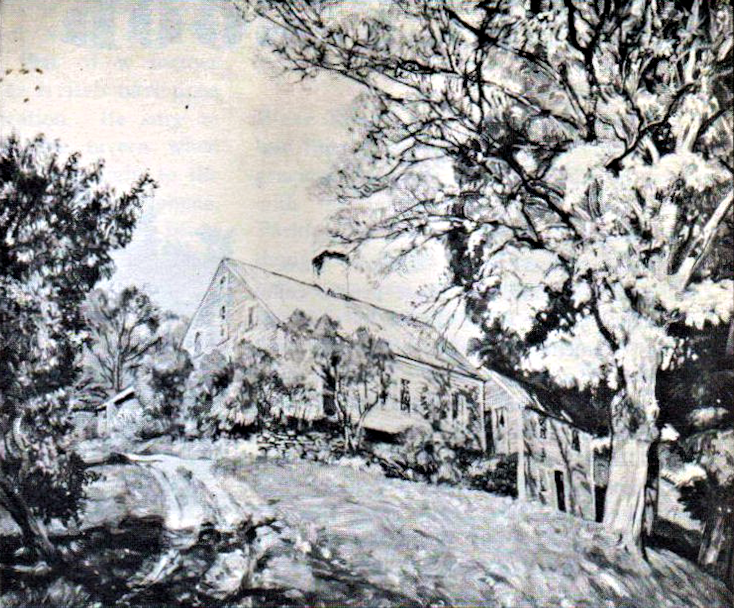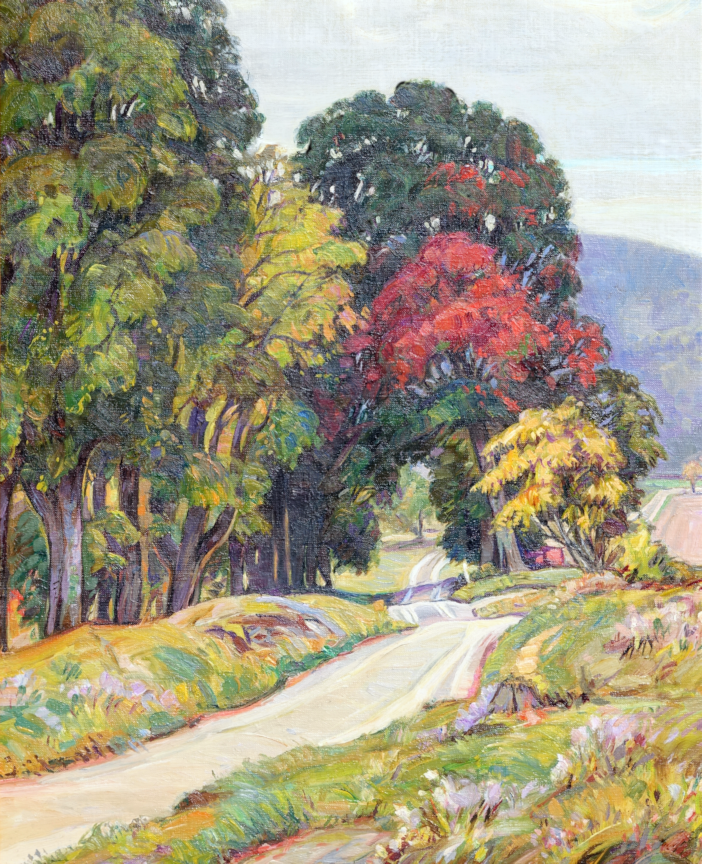Quick Reference
Painted in 1944
Technically there is no location. This
painting is a composite of RSW's
own creation from other works
Oil on Canvas
Landscape / Composite
Roads, Houses, Trees
20" x 40"
Not Available
Mr. and Mrs. P.H. Murray
NA
Also see: A Village Street (1945) for another
Related Links
- See also the...
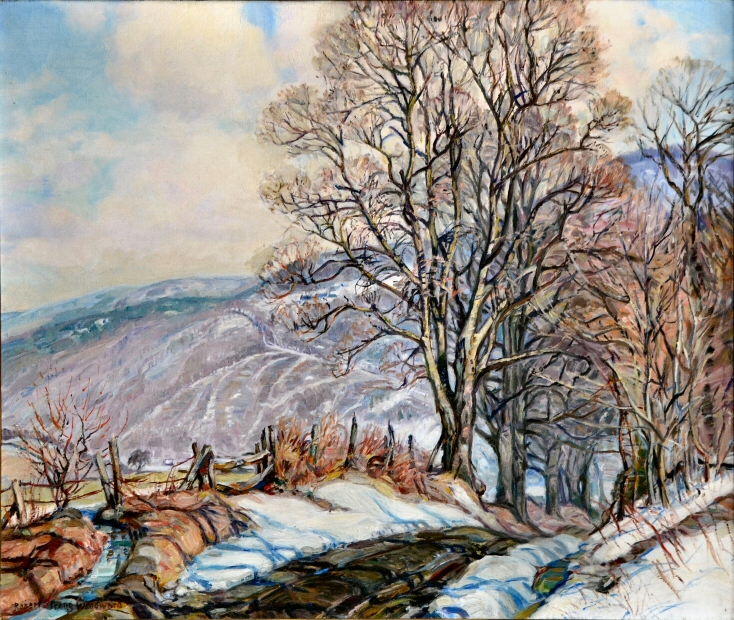 Roads & Streets Gallery to view related pieces.
Roads & Streets Gallery to view related pieces.
- See also the...
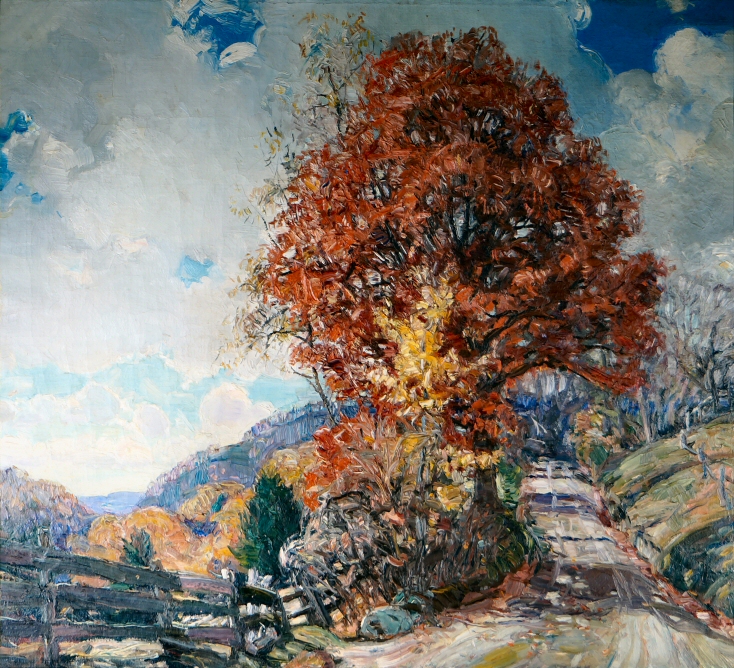 Burning Autumn Gallery to view related pieces.
Burning Autumn Gallery to view related pieces.
- See also Down an August Road to view related pieces.
- See also In Early Autumn, Oil, to view related pieces.
- See also Early Autumn, Chalk, to view related pieces.
- See also The Road Home, Oil, to view related pieces.
- See also Early Autumn, Oil, to view related pieces.
There are 6 related paintings of this subject. All except, Down an August Road, are composite paintings:
Featured Artwork: The Home Road
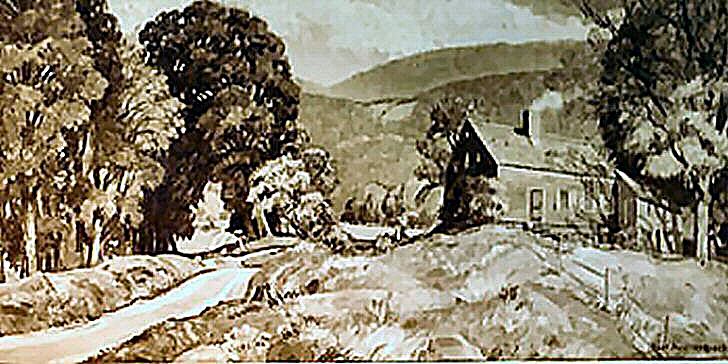
RSW's Diary Comments
"Painted in 1944. Long flat panel canvas made in studio winter of '44 when I was making several of that size and proportion. Designed arbitrarily from different elements I like in different past canvases. Road and Mt. from Down an August Road, old N.E. red farm house and maples from N.E. Autumn etc. Sold by Mr. Williams in the spring of 1944 to Mr. and Mrs. P.H. Murray, 89 Lawrence St., Gardner, Mass."
To the right:
An image of New England Autumn showing the house and maple used to make this painting.
To the left:
An image of Early Autumn showing the house and maple used to make this painting. You can view any of the following paintings to see the road, mountain and trees used to comprise the left side of the painting. Early Autumn is Down an August Road cut down after its owner returned it complaining it had two focal points. In Early Autumn is the original scene of the trees, the road, and the farm field across the road.
Editor's Note:
Between the years 1937 and 1945, Woodward was experimenting with new things such as the wide aspect ratio paintings now fashionable to hang over fireplaces. Another is that he "re-painted" (his term) more than a dozen paintings from his storage area of paintings he was never fully satisfied with their outcome. The third thing he did was start experimenting with what he called "composite" paintings (again his term). We really have not surmised his reasons. There really is no explanation, not a hint or remark by the artist in any record with have. Only the repainted 1920 paintings are the noteworthy. The composite paintings were not very successful. What is worth noting, of the 20" by 40" paintings below, all but one are composites. Hmm.
Additional Notes
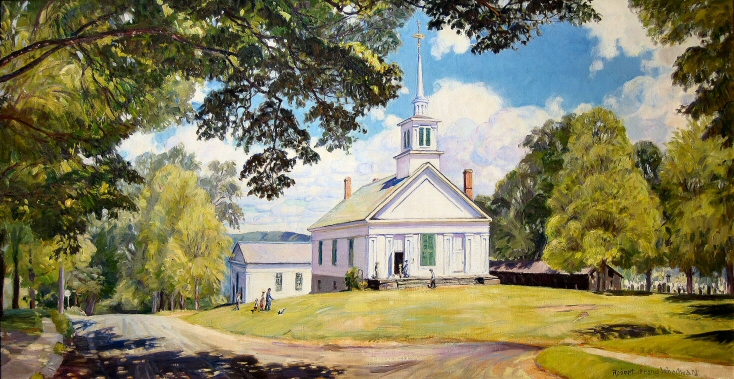
 1939 - 22" x 44" - Heart of New England,
1939 - 22" x 44" - Heart of New England,
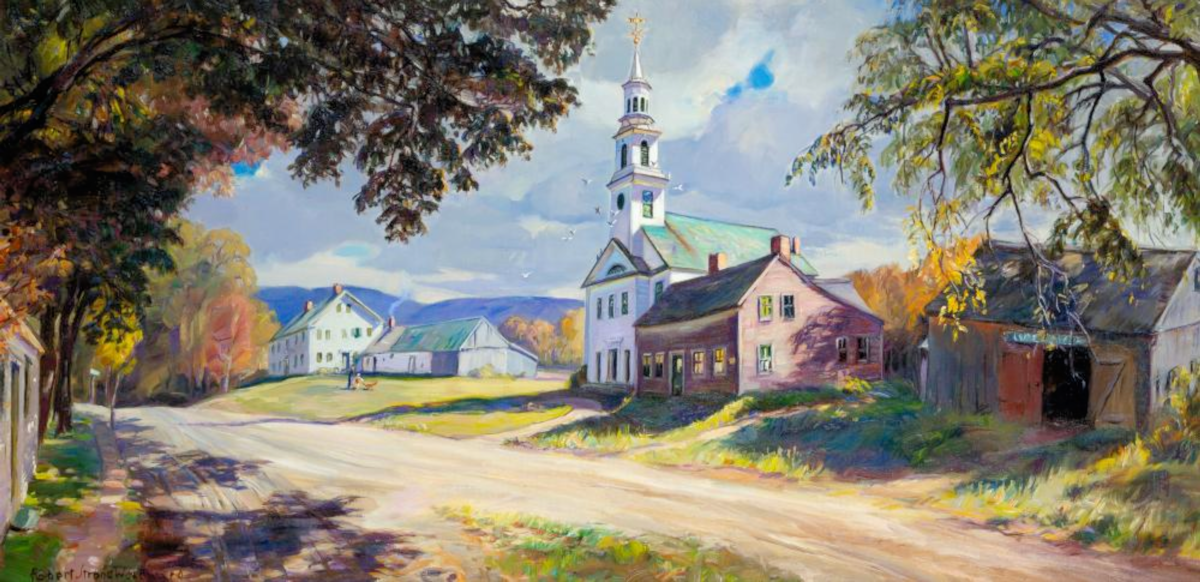
 1940 - 20" x 40" - New England, (composite)
1940 - 20" x 40" - New England, (composite)
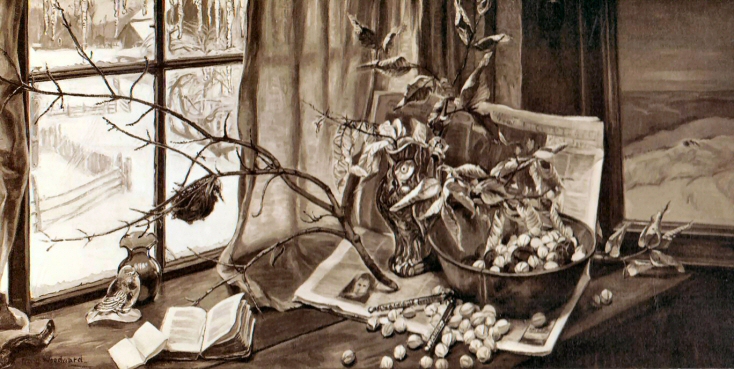
 1940 - 20" x 40" - Winter Pleasures,
1940 - 20" x 40" - Winter Pleasures,

 1945 - 20" x 40" - A Village Street, (composite)
1945 - 20" x 40" - A Village Street, (composite)
 It was rare for RSW to paint "composite" paintings. He was known for painting scenary as he saw it. In his diary
comments for this painting he states specifically it is a composite and shares with us that this was something he was doing with other paintings at the time. This
could have been prompted in 1939 when he painted a 25" x 30" of Mary Lyon's Church for a dear friend, however, the proportions did not quite work for the space she
intended. He then painted another version for her in the size 22" x 42", named, Heart of New England.
He then followed that up with a composite painting titled, New England, in 1940 using the trees on the left of
Heart of New England. Also in that same year he painted the "window painting," Winter Pleasures,
in the same size proportion and in 1945 painted both this painting, as well as, another composite, A Village Street.
It was rare for RSW to paint "composite" paintings. He was known for painting scenary as he saw it. In his diary
comments for this painting he states specifically it is a composite and shares with us that this was something he was doing with other paintings at the time. This
could have been prompted in 1939 when he painted a 25" x 30" of Mary Lyon's Church for a dear friend, however, the proportions did not quite work for the space she
intended. He then painted another version for her in the size 22" x 42", named, Heart of New England.
He then followed that up with a composite painting titled, New England, in 1940 using the trees on the left of
Heart of New England. Also in that same year he painted the "window painting," Winter Pleasures,
in the same size proportion and in 1945 painted both this painting, as well as, another composite, A Village Street.
 In the same year this painting was painted, another painting named,
The Road Home exhibited at the home of Mr. & Mrs. Roger Smith. Due to this connection and the similarity in name (RSW often flipped words in a
painting name and its sibling), we believe this oil's composition is most likely the same. We do not know the whereabouts of either artwork but do have the
black and white image above.
In the same year this painting was painted, another painting named,
The Road Home exhibited at the home of Mr. & Mrs. Roger Smith. Due to this connection and the similarity in name (RSW often flipped words in a
painting name and its sibling), we believe this oil's composition is most likely the same. We do not know the whereabouts of either artwork but do have the
black and white image above.
There is also the possibility that the source of the information for the 1944 Smith event, Woodward friend and event organizer
F. Earl Williams could have incorrectly recalled the name and that there is really only one painting.
 Finally, it is worth noting in regard to this painting and other composites, the road, mountain and trees used from
Down an August Road where also used in a composite RSW painted in 1939,
In Early Autumn with an accompanying chalk drawing named,
Early Autumn. In Early Autumn was later "cut-down" in 1950 because of an issue with competing focal points and renamed,
Early Autumn confusing matters even more. None the less, all paintings but the original, including this one,
are all considered composite paintings.
Finally, it is worth noting in regard to this painting and other composites, the road, mountain and trees used from
Down an August Road where also used in a composite RSW painted in 1939,
In Early Autumn with an accompanying chalk drawing named,
Early Autumn. In Early Autumn was later "cut-down" in 1950 because of an issue with competing focal points and renamed,
Early Autumn confusing matters even more. None the less, all paintings but the original, including this one,
are all considered composite paintings.

.png)

